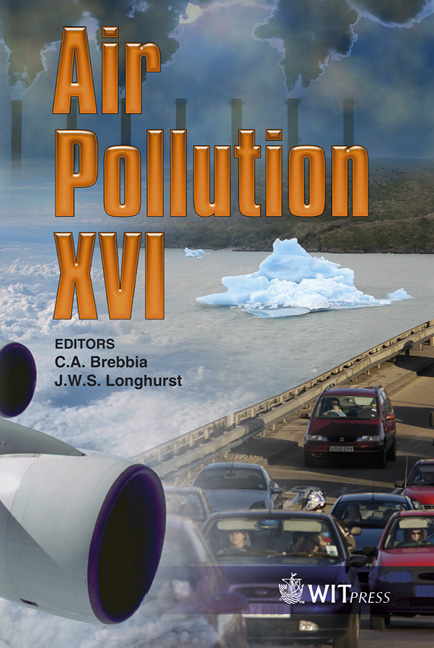Elevated PM10 And PM2.5 Concentrations In Europe: A Model Experiment With MM5-CMAQ And WRF-CHEM
Price
Free (open access)
Transaction
Volume
116
Pages
10
Page Range
3 - 12
Published
2008
Size
309 kb
Paper DOI
10.2495/AIR080011
Copyright
WIT Press
Author(s)
R. San José, J. L. Pérez, J. L. Morant & R. M. González
Abstract
We have applied the MM5-CMAQ model to simulate the high concentrations in PM10 and PM2.5 during a winter episode (2003) in Central Europe. The selected period is January 15 – April 6 2003. Values of daily mean concentrations up to 75 µgm-3 are found on average of several monitoring stations in Northern Germany. This model evaluation shows that there is an increasing underestimation of primary and secondary species with increasing observed PM10. The high PM levels were observed under stagnant weather conditions that are difficult to simulate. The MM5 is the PSU/NCAR non-hydrostatic meteorological model and CMAQ is the chemical dispersion model developed by EPA (US) used in this simulation with CBM-V. The TNO emission inventory was used to simulate the PM10 and PM2.5 concentrations with the MM5-CMAQ model. The results show a substantial underestimation of the elevated values in February and March 2003. An increase on the PM2.5 emissions (five times) produces the expected results and the correlation coefficient increases slightly. The WRF/CHEM model results show an excellent performance with correct emission database. The main difference between MM5-CMAQ simulations and WRF/CHEM is the MOSAIC particle models and the \“classical” MADE/SORGAM particle model used in WRF/CHEM and CMAQ respectively. MOSAIC seems to make a better job than MADE particle model for this particular episode. Keywords: emissions, PM10 and PM2.5, air quality models, air particles.
Keywords
emissions, PM10 and PM2.5, air quality models, air particles.





